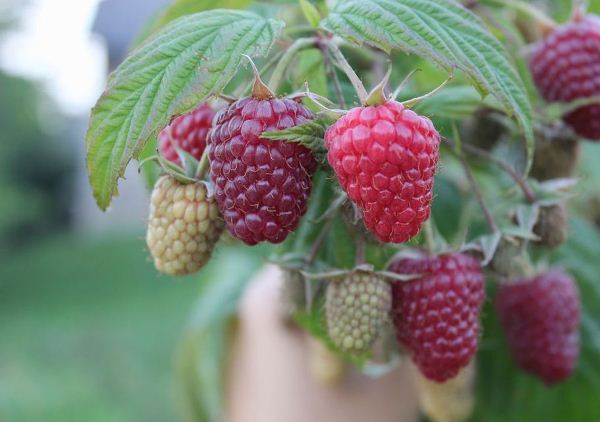Who does not like to feast on juicy ripe raspberries? There are certainly a few. There are more than 120 varieties of this fragrant and healthy berry. One of the most popular today is polkaShe is a regiment, with a description and reviews of gardeners which can be found below.
Table of contents
Description varieties raspberry polka
The raspberry polka variety - remontant sredneroslyy variety was bred in 1993 by Polish gardeners from Brzezn.Hence the unusual name of the variety: Poland - Polka. The result of selection exceeded all expectations. Polka very quickly became popular in Europe and not only. The large-scale distribution of polka to different parts of the world occurred after the international agricultural exhibition in 2003, FruitFocus.
Polka fruiting from late July to the first frost (annual shoots). The yield of this variety is extremely highbut. According to the test results of experimental stations, on average, it is about 4 kg per 1.
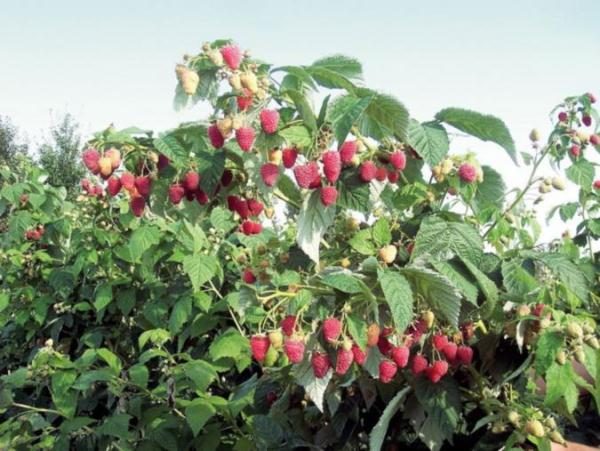
Harvest can be harvested twice a year - in addition to the main harvest, last year's sprouts yield a crop in early summer. If you grow raspberries for your own needs, you can leave part of the shoots next yearThen, due to the double harvest, you can feast on raspberries from the beginning of summer to the end of autumn. On an industrial scale, in order to avoid crop damage (twice a year - a large load on the plant), it is advisable to cut off the shoots annually and collect only the main crop. Then the polka period will be commercially viable, the main part of the varieties have already been harvested, and polka comes out to the stalls.
Strengths and weaknesses of the variety
You can highlight such The main advantages of polka:
- perfect berries (considered the best dessert variety in Europe);
- high yield (there are cases of yield of 12 tons per 1 ha)
- long fruiting period (subject to good feeding, really harvest twice a year without an unbearable load on the plant);
- firmness of sprouts and berries (berries do not flow, do not rot and are well preserved on the bushes);
- lezhkost, Transparency and dry separationd (even after freezing the berries look like fresh);
- good at conservation (suitable for both classic raspberry jam, and for juices, fruit drinks and jelly);
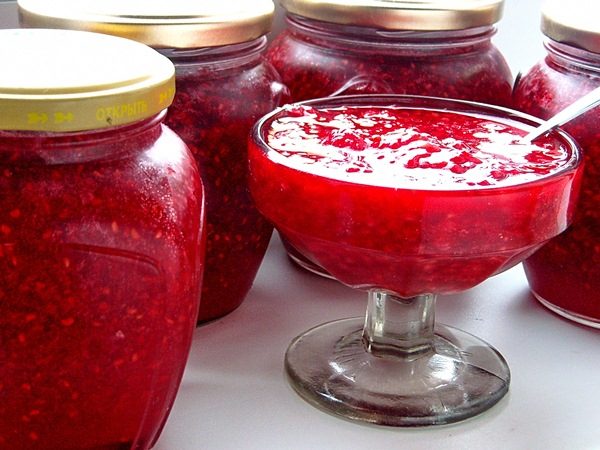
- the lack of large pronounced spikes (when harvesting it is not necessary to worry about the safety of the skin);
- immunity to the most common diseases this species (fungal, viral);
- the absence of "serious competitors" during the period of fruiting (it is rightfully considered one of the most profitable varieties).
Now for the cons:
- not cold resistant. Needs shelter and circumcision for the winter at the root;
- does not tolerate high temperatures (above + 35 °). It is necessary to shade the berries and bushes, even with drip irrigation;
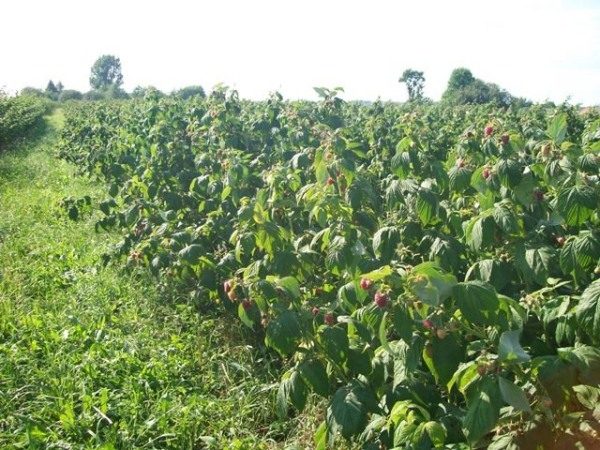
- predisposed to root system diseases (rot, root cancer, etc.);
- forcing shoots substitutions;
- needs to abundant recharge (with a lack of potassium, nitrogen, organic formation of shoots falls).
As can be seen from the lists, the disadvantages of polka are fading to their merits. It can be summed up that polka is good for both commercial cultivation and for oneself.
Characteristics of berries and bushes, yield
Polka shoot height can reach 1.5 meters. This variety has a very high resistance of shoots. The root system is also quite powerful., one root of an adult plant is able to form many shoots with mild spines.
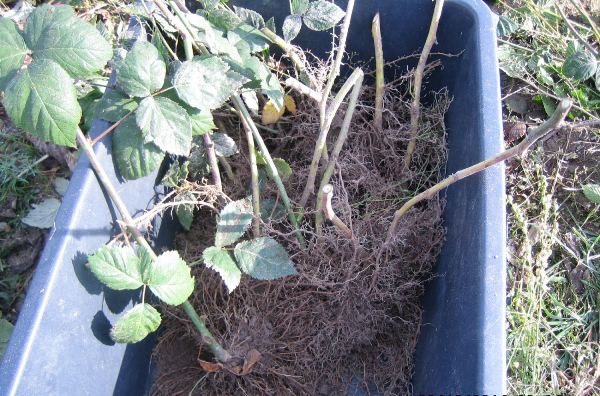
Raspberry Polka berries are all praise. The shape of the berries correct conical. They are rather large (2.5-3 cm), shiny, have an elongated shape, rich red color, a shallow drupe, a strongly pronounced taste and a pleasant delicate aroma. The correct balance of sweetness and acid, as well as density and wateriness will not leave indifferent connoisseurs of this useful berry. Each brush gives an average of 8 berries weighing 3-5 grams eachthat you will agree, quite well.
Planting, reproduction and care rules
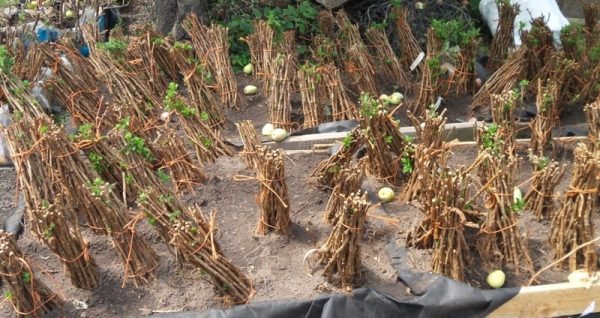
Polka seedlings are planted before or at the end of the growing season. Usually either in late autumn or early spring. Of fundamental importance is the correct planting and pruning of planted plants. It is advisable to choose an area with good lighting, as in the shade the shoots are too drawn out. Disembarkation can be either pit-type or trench-type, it happens by a belt method. It is necessary to clear the plantation for planting from weeds in advance. Planted seedlings should be so that the distance between the plants was in the row - 0.5 / 1 m, the aisle - 1.5 / 2 m. For the year the rows are adjacent, the distance between the seedlings will be about 35 cm. It is advisable to leave no more than 7 shoots in the bush, otherwise the plant will need a very abundant diet. It is optimal if the soil is moderately drained, podzolic or slightly acidic (pH not higher than 7). In a trench or a pit with a depth of 40/45 cm, a suitable nutrient mixture is laid (potash, phosphoric and dobriv plus compost or manure are traditionally used).
About polka nutrition: seedling growth is quite active, the first bait plant needs as early as Aprile. Here, nitrogen fertilizers are added to organic potash and phosphate fertilizers. You can use complex feeding. The second feeding is carried out in the middle of summer and the third - in September.. Do not forget about regular watering. By the way, the plants actively absorb the top dressing, if it occurs after watering, then it is desirable to loosen the soil. Do not overdo it with fertilizers, overdose is harmful as a plant can burn.
Although the variety is medium tall, shoots need support. Especially in low light conditions, the tops of seedlings trunks bend under the weight of the berries in the hand. As a trellis, it is best to use V- or T-like supports made of galvanized wire, not less than 4 mm thick. The distance between the rows of wire - 50-70 cm. The wire tension is optimally carried out with the help of special tensioning devices. After the shoots are bred and laid on different sides, fixing on the wire with pieces of strong rope. From time to time it is necessary to thin out the raspberries as polka gives a lot of shoots.
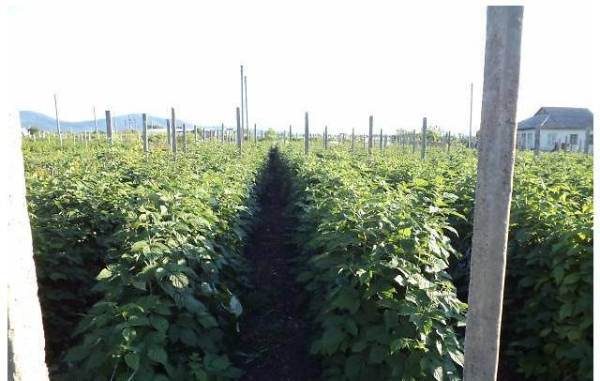
In winter, shoots are advised to cut to zero. (except for cases when for personal needs it is necessary to “stretch” the harvest) and shelter (except for the southern regions). Mulch polka with straw, spill, high peat. Cover with agrofiber. It is strictly forbidden to water the wintering raspberries.
Polka breeding occurs due to the separation of root offspring. In the second half of summer, scions dig in, separated from the maternal root with a lump of earth and planted in a permanent place in the raspberries. The optimal weather for such a procedure is rainy and overcast, on a sunny day, saplings should be grated. In the prepared hole pour 1 l. water and put there scions with leaves. Approximately in half a month the saplings start growing and reach standard sizes for wintering.
Diseases and pests
It was noted above that polka is not susceptible to common "raspberry" diseasessuch as spider mite and gray rot. Worms and other small pests are unrealistic, as the bushes begin to bloom and bear fruit later than the majority of remontant varieties. And pests are known to prefer early fruits. But is everything so cloudless?
To combat it, physiologically acidic phosphate-potassium fertilizers and gypsum are introduced into the soil.
Also, if there is a lack of potassium or high acidity of the soil, the bush may react by reddening the foliage. The same trend is observed with malnutrition. Usually, in order to heal the raspberries in such a case, it is enough to fertilize plants with wood ash before watering.
Reviews gardeners about raspberries
Gardeners usually speak polka only well. This is not surprising, because there is a perception that due to the high quality of berries, resistance to diseases and pests and long-term yield, raspberries the polka was awarded the title of "Favorite gardeners".
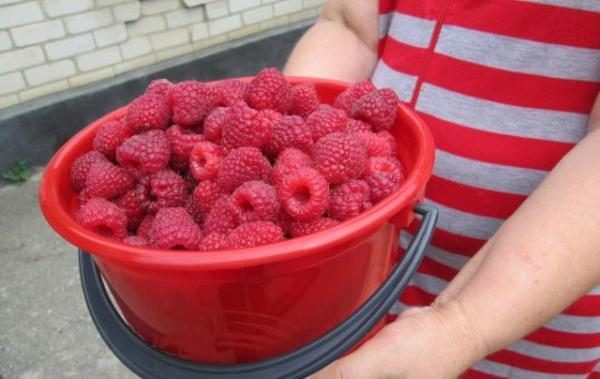
Experienced raspberries write: “I have been fond of growing raspberries for many years, but I still haven’t decided which sort is dearer to me - tall or short. I am very grateful to the Polish breeders for the “Polka”: remontant, high-yielding, large-fruited raspberries. This tall the variety has an incredible raspberry flavor and wonderful taste. "
The family of agronomists Mikhail and Alla Molovychko share their impressions about Polka: “We have been growing raspberry varieties for a long period, bearing fruit on the second-year shoots in the middle of summer. And now the Polka raspberry appeared in our raspberry pie, fructifying on annual shoots from August to the end of the growing season. Late raspberry is not susceptible to pests., has large transportable berries that are highly valued in the market - in the fall they have no competitors. ”
Many connoisseurs have already met and appreciated the polka. What is the most important thing for all summer residents? Of course, a good result at minimal cost. This variety is ideal for cultivation for commercial purposes, and for their own needs.. Polka does not require superknowledge in care, easily propagated. Berries are tasty, fragrant and have a demand in the market. This is the case when the result justifies the means.
